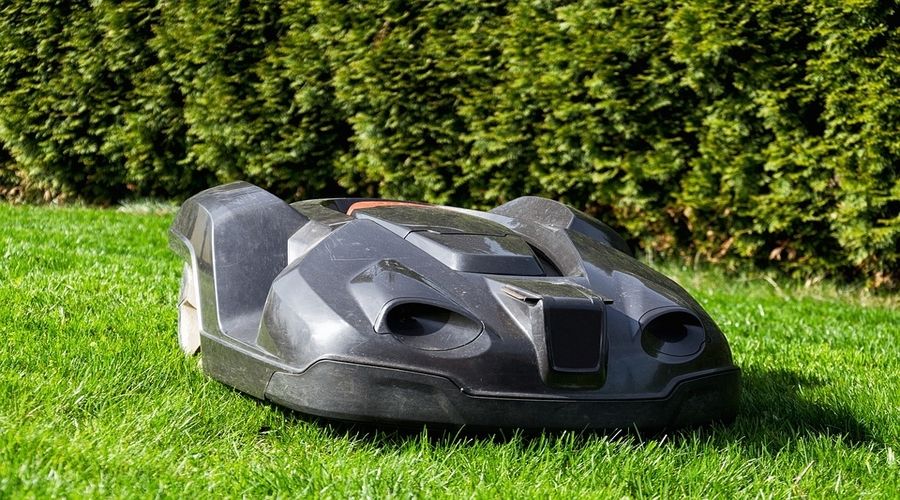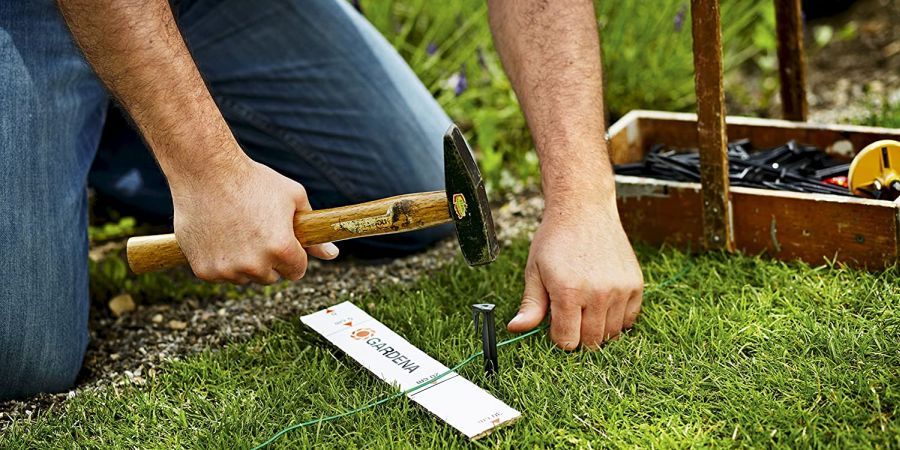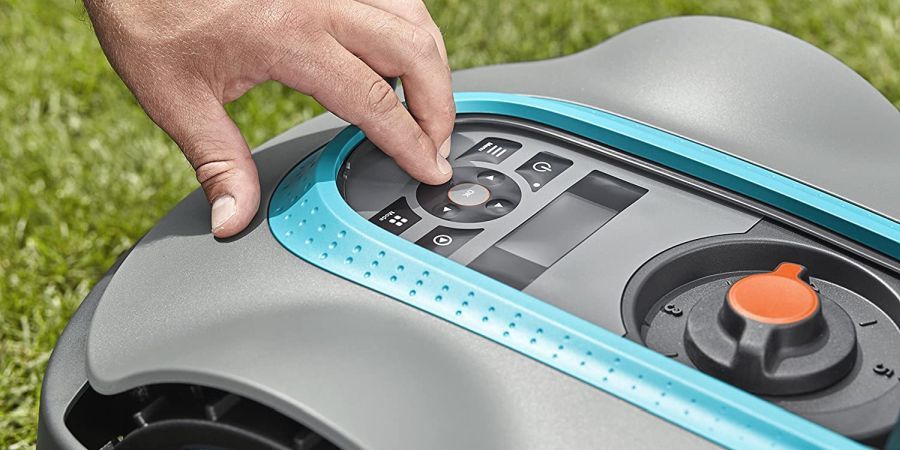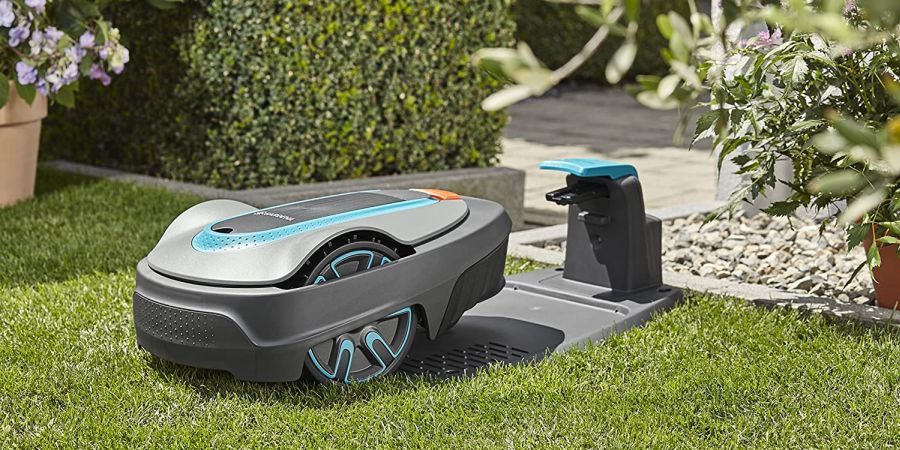Robot mowers are currently the most cutting-edge lawn mowers on the market. Not only can they automate your lawn mowing duties, but they can save you time and money as well. They require very little maintenance and take zero gas, oil, or air filters.
But, how exactly do robot lawn mowers work? This is a good question and is precisely what we discuss in-depth below: from GPS, navigation, and charging to blades, advanced features, and more.
How Do Robot Lawn Mowers Navigate Your Yard?
The way that robotic mowers navigate your lawn is one of their most impressive features because you don't need to guide it or even be there to supervise the job. Depending on the model, robot mowers typically navigate yards one of two ways: by sensing perimeter wires, and objects like trees and flowerbeds, or via a GPS route.
Guidewires
Image credits: Gardena via Amazon
Guidewires are the most common sort of navigation system that robot mowers use. There are two types of perimeter wires: above-ground, and wires that need to be buried. The majority of robotic mowers have above-ground wires. But a handful of them have wires that need to be buried.
There are pros and cons to both above-ground guidewires and underground ones. Obviously burying wires takes more effort to install, but they are also much more protected and aren't likely to come out of place or require straightening up. Above-ground wires, on the other hand, while quicker and easier to install, will more than likely require more maintenance to keep them working properly.
GPS
The other navigation system that robotic mowers may come with is GPS. There are two main subtypes of GPS-navigated lawn mowers: the kind that you program a route for, and the sort that actually learns your yard and develops its own route automatically over time.
Both types have advantages. If you only want certain parts mowed, like narrow passages or in between garden/flower beds, you would do better with a robot mower that you can manually program. But if you want the unit to cover the entire area of your yard, the self-learning kind offers far more convenience.
Why Do Robot Lawn Mowers Mow in Patterns?
Image credits: Gardena via Amazon
Once programmed and unleashed, most robotic mowers seem to cut the lawn in a random pattern. However, on much closer examination, most of these patterns are not random at all; they are simply not the sort of patterns that we mere mortals are used to think of. That's because most robot mowers are measuring your grass as they cut it, and they are making the highest patches of grass their priority.
Depending on the type of robot you have cutting your grass, they may have advanced options for choosing from various patterns. Many units lack these options though.
What Blades Do Robot Mowers Use?
Most robotic mowers use micro blades, rather than the full-size blades you may know from walk-behind and riding mowers. Keep in mind that robot mowers don't cut the grass once every week or two. Rather, they tend to cut the grass every day, or every other day. That means that their much smaller blades are more than enough for the job.
In fact, because the blades are so much smaller and sharper, they do an even better job than larger blade types. You definitely won't get a standard/affordable mower with blades that cut so precisely, not even with the best ones.
How Do Robot Lawn Mowers Charge?
Image credits: Gardena via Amazon
Robotic mowers come with very easy-to-use charging stations. In fact, most of the time, you will never need to do anything with it at all apart from placing the mower on it if it happens to die before it recharges itself. That is because the wide majority of robot mowers are programmed to return to their stations and charge themselves with no command necessary from you. If they detect incoming rain or wetness in the grass, they will stop mowing and go "home" to charge. Likewise, when their battery levels are reaching depletion, you guessed it, they return to their base station and power themselves up.
Advanced Robot Mower Features
The very best robotic mowers come with more advanced features than others. These features include, but are not limited to:
- Rain sensors
- Live local/global weather updates
- Compatibility with Alexa/smart home products
A Final Word on Robotic Lawn Mowers
These mowers are capable of nearly completely eliminating your basic lawn care duties. That said, they don't come cheap, and they don't last as long as classic push, self-propelled, and small riding mowers do either. At any rate, robotic mowers indeed seem to be the way of the future.
Each year more and more of these convenient bot-like mowers find their way into neighborhoods near you. Will your yard be the next one to introduce a robot mower to the block?




